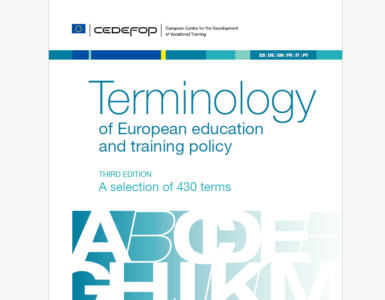by Gerrit Bulten, WebClip2Go, The Netherlands.
Lifelong learning is the ‘new normal’. We promote it, we expect it from our students and the days are long gone when mastering one skill lasted until retirement. But do we practice lifelong learning ourselves? If you are over 40, you have seen new things being introduced and disappear. The skill life cycle has been shortened dramatically in the past decades. So lifelong learning is here to stay. But… do we practice what we preach? Do we embrace innovation, or do we stick to what we know? The latter is more comfortable, but also a recipe for painting ourselves into a corner… Or being forced into early retirement.
Last February during a conference, a keynote speaker declared PowerPoint dead. And he used PowerPoint to explain why. Existing tools don’t suddenly die, they adapt. Applying new insights demands changing what we do. “The cognitive Load Theory” (John Sweller, 1998) and “Cognitive Multimedia Theory” (Richard Mayer, 1998) changed the way we create multimedia knowledge clips. “Narrative Learning in the Adult Classroom” (M. Carolyn Clark, Marsha Rossiter, 2008) sparked even more changes to the way we create knowledge videos.
Today, many videos are merely a talking head next to a PPT slide. OK, they’re much more dynamic than, say, 20 years ago because of better tools. But a talking head, nevertheless. Are we waiting for the next report on better learning, or can we learn from others? About how to convey knowledge using video?
Yes, we can! Let’s look at the television industry. During prime time, how many talking heads do we count? None… Prime time is for talk shows. A host with guests, if we’re lucky, specialists in their field; the topic being discussed. The host directs the conversation, steers it in a direction that resonates with the viewer. A team behind the scenes helps the host by asking the right questions. And a good host and good team leaves the viewer with a satisfied feeling and answers to questions that the viewer didn’t have when starting to watch the talk show. When the viewer ends up with more questions than answers, the rates drop and the host, the crew and sometimes the entire talk show is replaced. The same applies to knowledge clips, they need to be carefully prepared. They can be scripted. If it does not feel like the content is read off the prompter…
TV is all about commercials. Television content is referred to in the TV industry as filling the gaps between the commercial breaks. And universities are not about commercial breaks. So, there’s nothing to learn there for us… or is there?
Let’s zoom in on what a talk show achieves. A PPT video is a ‘sending’ video. It sends information to the viewer. And we like to think that our knowledge is so exciting that we retain the viewers’ attention for as long as we talk. If only that were true… if only students were able to watch long, static video and absorb all that valuable knowledge…
So, what makes the talk show format work? Emotions. A talk show engages the viewer. The viewer becomes part of the conversation. Wouldn’t it be logical to present knowledge as a talk show? Engaging the student? Challenging the student while explaining about a subject? Asking challenging questions and implicitly inviting the viewer to think about the answers while we give them? If we engage the student in the video, we generate emotions in the student. And emotions activate our memory. Think of it; if someone ever really hurt you, either physically or psychologically, you remember. Pain is a very strong emotion; it makes an event stick in our brain for life.
5 years ago, WebClip2Go introduced the first automated PPT video production system. Almost all universities in The Netherlands now own one or more of these systems. The natural next step is the recently introduced automated talk show. By scripting a talk show, the viewer is drawn into the conversation and becomes part of it. Emotional engagement triggers the brain in a completely different way than watching a one-way (sending) video. It creates a more solid imprint of the event (talk show knowledge clip) in the brain, making the story stick. And getting knowledge into the brains of our students, isn’t that the very purpose of knowledge clips?

Gerrit Bulten, WebClip2Go, The Netherlands














